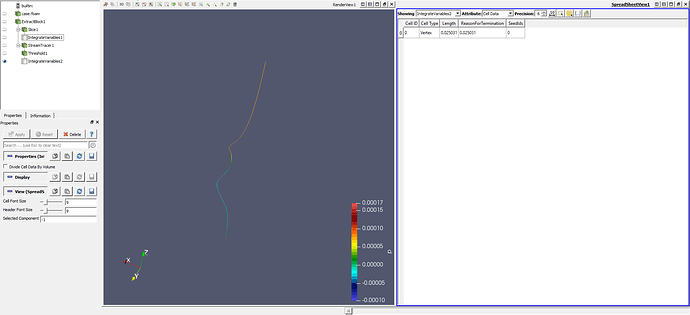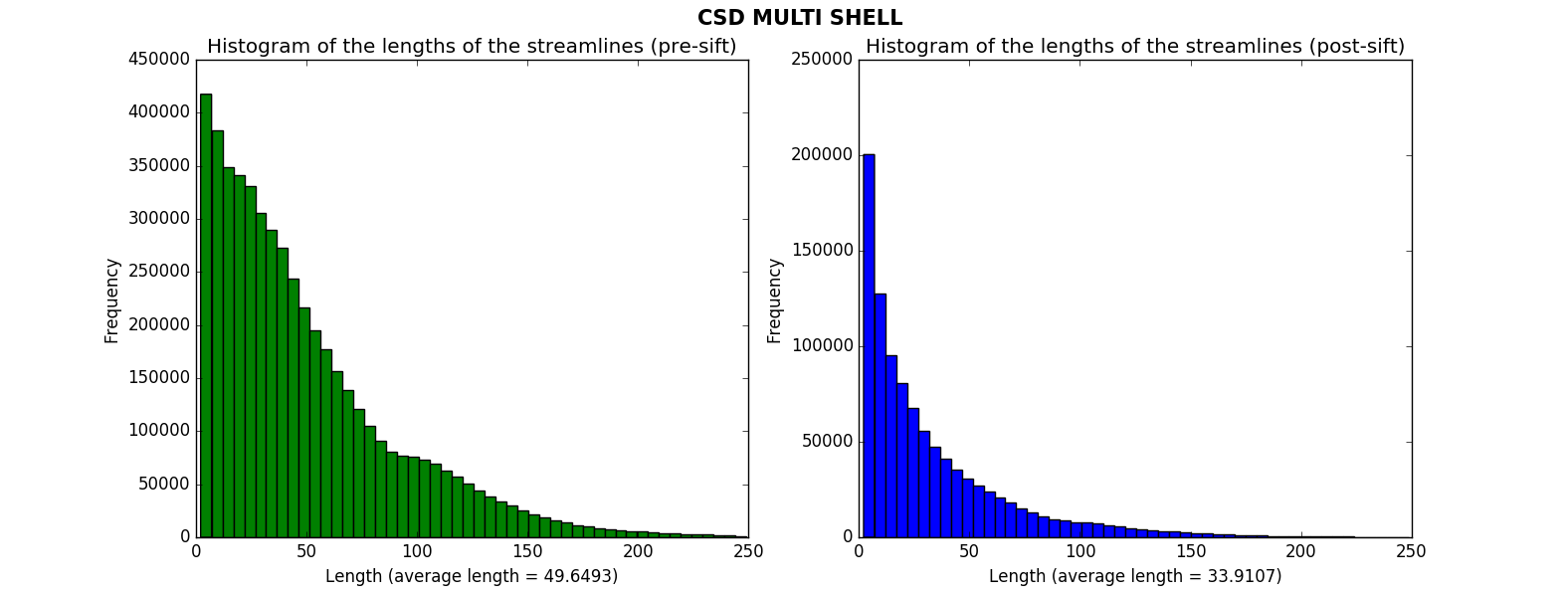
If the tube segments are very short, the cones at the tips may overlap because their lengths are not changed.

Note that there are a couple of limitations to this technique. The end result should be an image similar to the top image above. If the cone is too long in comparison to its base, you might need to increase the “Tip Radius” and decrease the “Scale Factor” to squash the cones. To get the glyphs to match the size of the tube, or to be slightly larger, turn “Scale Mode” to off and adjust the “Scale Factor” to 1. To get a cone at the end of the tube segments, change the “Glyph Type” to “Arrow” and the “Tip Length” to 1.

If the resulting tube segments overlap and appear as a single tube, adjust the “Value” property to a smaller number. Change the “Clip Type” option to “Scalar”, the “Scalars” array to “IntegrationTime” and the “Value” option to -0.2. Note that because the integration direction was backward, the “IntegrationTime” variable is non-positive. In this step, we’ll clip the stream tubes by the “IntegrationTime” variable. Attach a Clip filter to the Tube filter in Step 6.Attach a Tube filter to the Stream Tracer with Custom Source from Step 5.Change the “Vectors” option to “Velocity”, the “Integration Direction” to “BACKWARD”, and the “Integration Step Unit” to “Length”. Create another Stream Tracer with Custom Source with the “Input” set to the dataset loaded in Step 1 and the “Seed Source” set to the Contour filter.This step gives you a set of points along the streamlines evenly spaced in integration time, which means points will be closer where the vector field magnitude is lower and less densely packed where the vector field magnitude is greater. Again, some tweaking might be needed to the exact number of steps to achieve the desired glyph density. Change the number of “Steps” to somewhere between 50 and 100. Remove the existing value in the table under “Isosurfaces” and click on the insert range icon (below the minus sign). Change the “Vectors” option to “Velocity” and the “Contour By” option to “IntegrationTime”. Attach a Contour filter to the Stream Tracer with Custom Source created in Step 3.Set the “Integration Step Unit” option to “Length”. Set the “Input” to the dataset you loaded in step 1 and the “Seed Source” to the Point Source created in step 2. Create a Stream Tracer with Custom Source.Adjust this number if the resulting image is overloaded with arrow glyphs. Set the “Number of Points” to between 50-100. Place the center of this source somewhere near the beginning of the vector field.

Add a Point Source from the Sources menu.Let’s assume the array is named Velocity. To create images like this, follow this recipe: This recipe can be used to generate images like this:Ĭompared to the image below created with the standard Glyph filter, the curvedness of the glyphs and their end-to-end alignment in the image above makes it much easier to visually trace along the vector field. The recipe combines several of ParaView’s filters to produce curved arrow glyphs that are laid end-to-end at a good density in the image, resulting in improved perception of the vector field. The technique is inspired by the 2D vector field visualizaton technique Turk and Banks presented in their Image-Guided Streamline Placement paper at SIGGRAPH 1996. This post describes a recipe I learned from Russell M Taylor II at UNC’s Department of Computer Science. ParaView has a number of great filters for generating visualizations of 3D vector fields.


 0 kommentar(er)
0 kommentar(er)
